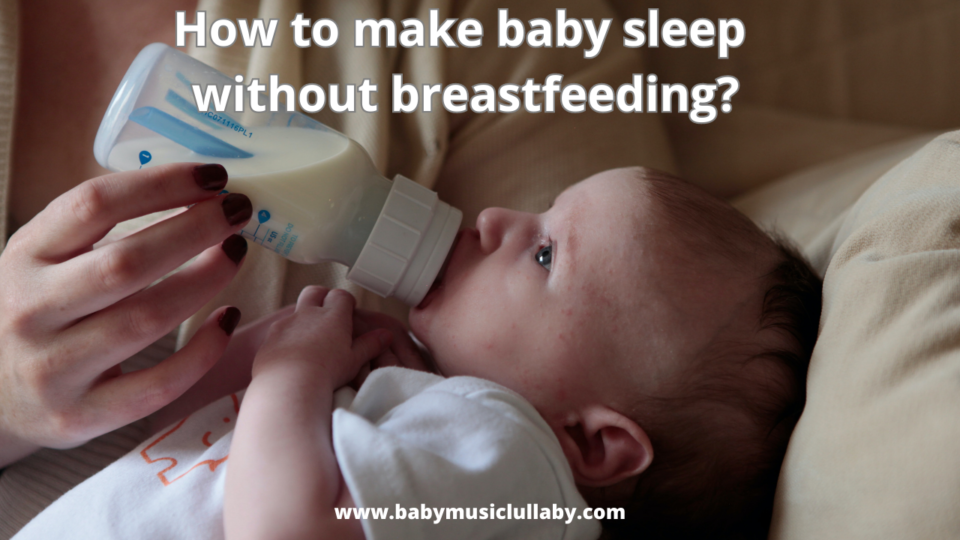Contents
Introduction
Transitioning your baby to sleep without breastfeeding can be a gradual process that requires patience and consistency. While breastfeeding can be a comforting and soothing method for many babies, it’s possible to help your little one develop alternative sleep associations. In this guide, we will provide you with effective tips to help your baby sleep without breastfeeding. Let’s explore them!
Establish a Bedtime Routine
A consistent bedtime routine sets the stage for a smooth transition to sleep without breastfeeding. Consider the following tips:
- Calming Activities: Engage in calming activities before bedtime, such as a warm bath, gentle massage, or reading a bedtime story. These activities help signal to your baby that it’s time to wind down and prepare for sleep.
- Cuddle and Comfort: Offer cuddles, hugs, and soothing words of reassurance to help your baby feel loved and secure. This can help them transition to sleep without relying solely on breastfeeding for comfort.
- Create a Relaxing Environment: Dim the lights, play soft lullabies or white noise, and ensure the sleep environment is comfortable and conducive to sleep.
Introduce a Transitional Object
A transitional object can provide comfort and security for your baby when transitioning to sleep without breastfeeding. Consider the following suggestions:
- Soft Blanket or Lovey: Introduce a soft blanket or a lovey that your baby can hold or snuggle with during sleep. Choose an object that is safe and age-appropriate, and encourage your baby to form a positive association with it.
- Scented Cloth or Shirt: Place a cloth or shirt with your scent near your baby’s sleeping area. The familiar scent can provide a sense of comfort and make the transition easier.
Gradually Reduce Nighttime Feedings
If your baby is accustomed to breastfeeding during the night, gradually reducing nighttime feedings can help them learn to sleep without relying on breastfeeding. Consider the following strategies:
- Offer Soothing Techniques: Instead of immediately offering the breast when your baby wakes up, try soothing techniques like gentle rocking, patting, or singing. This helps them learn alternative ways to self-soothe and fall back asleep.
- Delay Feeding: If your baby wakes up during the night, try delaying the feeding for a few minutes. This can give them an opportunity to self-settle and potentially fall back asleep without relying on breastfeeding.
- Gradual Weaning: If you’re ready to wean your baby from nighttime breastfeeding, gradually reduce the duration and frequency of nighttime feedings over time. Replace the feeding with soothing techniques and reassurance.
Consistency and Persistence
Consistency and persistence are key when helping your baby sleep without breastfeeding. Here are a few additional tips:
- Team Effort: If possible, involve your partner or other caregivers in the sleep routine. Having a consistent approach from all caregivers can help reinforce the new sleep associations.
- Respond with Love and Patience: Be responsive and supportive when your baby struggles with the transition. Offer comfort and reassurance, knowing that change takes time.
- Seek Support: If you’re finding it challenging to help your baby sleep without breastfeeding, consider seeking guidance from a lactation consultant, pediatrician, or sleep specialist who can provide personalized advice and support.

Conclusion
Transitioning your baby to sleep without breastfeeding is a gradual process that requires patience, consistency, and alternative soothing techniques. By establishing a bedtime routine, introducing a transitional object, gradually reducing nighttime feedings, and maintaining a supportive environment, you can help your baby develop new sleep associations. Remember, every baby is unique, so adapt these tips to suit your baby’s individual needs. Wishing you and your baby restful nights and successful transitions to sleep without breastfeeding!

 Subscribe to Get Soothing Lullabies to Help Your Baby to Sleep
Subscribe to Get Soothing Lullabies to Help Your Baby to Sleep